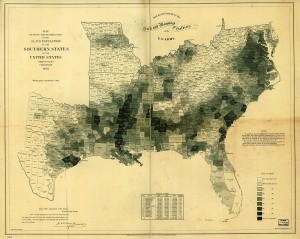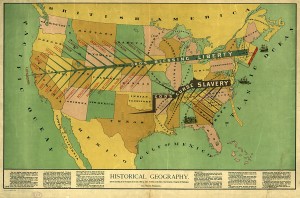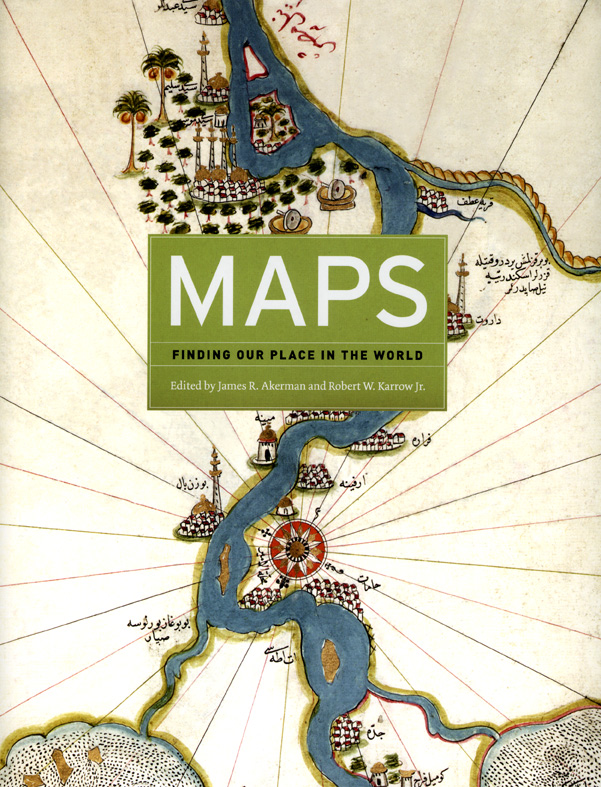Mapping Slavery in America
Distribution of the Slave Population
 Edwin Hergesheimer, "Map Showing the Distribution of the Slave Population of the Southern States" (1861). Library of Congress. |
The “slave map” was of particular interest to President Abraham Lincoln, as illustrated in a painting by Francis Bichnell Carpenter, First Reading of the Emancipation Proclamation of President Lincoln. [Offsite link: See an image of the painting on the U.S. Senate website.] The artist spent six months living at the White House in order to complete this work, and in that time repeatedly observed Lincoln studying the map. To master the detail on the map for his painting, Carpenter surreptitiously borrowed it; and when the president visited the artist in his White House studio a few days later he remarked, “You have appropriated my map, have you? I have been looking all around for it.” According to Carpenter, Lincoln was once again instantly absorbed by the map and used it to trace the recent progress of Union troops through Virginia. It gave Lincoln happy news, for the areas conquered by the Union just that week were densely populated with slaves. Thus Hergesheimer’s map appears in the corner of Carpenter’s painting, a detail as meticulously chosen as the artist’s arrangement of Lincoln’s cabinet: those sympathetic to emancipation appear on the president’s right, while the more conservative members are placed at his left. The map also appealed to Carpenter for its elegant organization of information. By just a glance, one could see the proportion of blacks to whites in the Southern states, which made it impossible to deny that slavery was at the heart of the rebellion.
Historical Geography
 John F. Smith, "Historical Geography" (1888). Library of Congress. |
